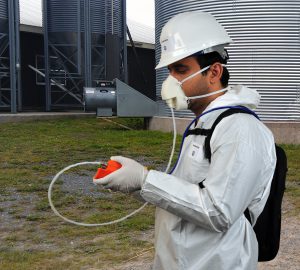Field Olfactometry
What is it?

What can it be used for?
What can it NOT be used for?
It doesn’t provide odour concentration in ouE/m3. Odour concentration is only measured by the reference method (i.e. dynamic olfactometry according to EN 13725:2003) at emissions. It is not recommended to be used at the fenceline or near the population affected. Results obtained entail high variability, which is due to several factors, and that makes that results of field olfactometry are not comparable with any reference method. The calibration of the assessors is a key element, and sniffing sticks are not suitable for this calibration.
